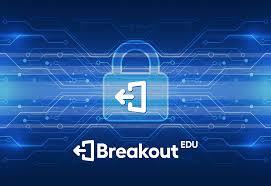Breakout EDU: How to Transform Learning with Engaging Escape Rooms

Introduction
In today’s educational landscape, engaging students can be a challenge. Traditional methods often fall short in capturing students’ attention and fostering deep learning. Enter Breakout EDU, a dynamic and interactive approach that transforms learning into an immersive adventure. By integrating escape room principles into the classroom, Breakout EDU offers a novel way to engage students, promote critical thinking, and make learning fun. This article delves into what Breakout EDU is, how to implement it effectively, its benefits, and the challenges you might face.
What is Breakout EDU?
Breakout EDU is an innovative educational tool that brings the excitement of escape rooms into the classroom. At its core, it involves creating a series of puzzles and challenges that students must solve to “break out” of a locked box or digital platform. Unlike traditional learning methods that often rely on passive instruction, Breakout EDU engages students in active problem-solving and teamwork.
Breakout EDU can be broadly classified into two types: digital and physical. Digital Breakout EDU games are played on computers or tablets and use online platforms to present puzzles and challenges. These games often involve coding, cryptography, or virtual clues. Physical Breakout EDU games, on the other hand, use tangible props, locks, and clues hidden around the classroom to create a hands-on escape experience. Both types aim to make learning more engaging and interactive, but they cater to different classroom environments and resources.
Implementing Breakout EDU in the Classroom
Creating a successful Breakout EDU game involves several key steps. First, it’s crucial to establish clear educational objectives and goals. What do you want students to learn from the experience? Whether it’s reinforcing a math concept or exploring historical events, having a clear goal helps in designing relevant and meaningful puzzles.
The next step is to design the puzzles and challenges. These should align with the learning objectives and vary in difficulty to cater to different skill levels. Puzzles can include riddles, cipher codes, or logic challenges. Incorporating a storyline or theme can make the experience more engaging. For instance, a game set in a medieval castle might involve solving clues related to historical events or figures.
To implement Breakout EDU, you’ll need various tools and resources. For digital games, platforms like Breakout EDU’s own website offer ready-made games or tools to create custom ones. Physical games require props such as locks, keys, and hidden compartments. Both types may also benefit from a bit of creativity and resourcefulness, using everyday classroom materials to enhance the game.
Benefits of Breakout EDU
Breakout EDU offers numerous benefits that can significantly impact student learning. One of the primary advantages is the enhancement of critical thinking and problem-solving skills. By engaging in complex puzzles and challenges, students are encouraged to think critically and develop strategies to solve problems. This active involvement fosters deeper understanding and retention of the material.
Another benefit is the encouragement of teamwork and collaboration. Breakout EDU games typically require students to work together, share ideas, and communicate effectively. This collaborative environment helps build interpersonal skills and teaches students the value of working as a team to achieve a common goal.
Moreover, Breakout EDU boosts student engagement and motivation. The interactive and game-like nature of Breakout EDU captures students’ interest and keeps them invested in the learning process. This heightened engagement often leads to better participation and enthusiasm in the classroom.
Finally, Breakout EDU provides a hands-on learning experience that can be more memorable than traditional methods. The immersive nature of escape rooms allows students to apply what they’ve learned in a practical and enjoyable way, reinforcing their understanding through active involvement.
Challenges and Considerations
Despite its many benefits, implementing Breakout EDU can present challenges. One common issue is the complexity of designing and setting up the games. Creating puzzles that are both challenging and educational requires careful planning and a good understanding of the learning objectives. Additionally, the setup can be time-consuming and may require a fair amount of creativity and resources.
Another challenge is ensuring that the game is accessible to all students. Some students may struggle with certain types of puzzles or find the physical setup difficult to navigate. It’s important to design games that are inclusive and consider the diverse needs of your students.
Assessing the effectiveness of Breakout EDU games can also be challenging. While student engagement and enthusiasm are often high, measuring the impact on learning outcomes requires careful evaluation. Teachers need to consider how well the game aligns with educational goals and whether it effectively reinforces the material.
Finally, while Breakout EDU can be a valuable tool, it’s essential to balance it with other teaching methods. Relying solely on games may not provide a comprehensive educational experience, so integrating Breakout EDU into a well-rounded curriculum is key.
Conclusion
Breakout EDU represents a transformative approach to learning, offering a fun and interactive way to engage students and enhance their educational experience. By incorporating escape room principles into the classroom, teachers can foster critical thinking, collaboration, and enthusiasm for learning. While there are challenges in designing and implementing these games, the benefits often outweigh the difficulties. As educational technology continues to evolve, Breakout EDU stands out as a powerful tool for creating memorable and effective learning experiences.

